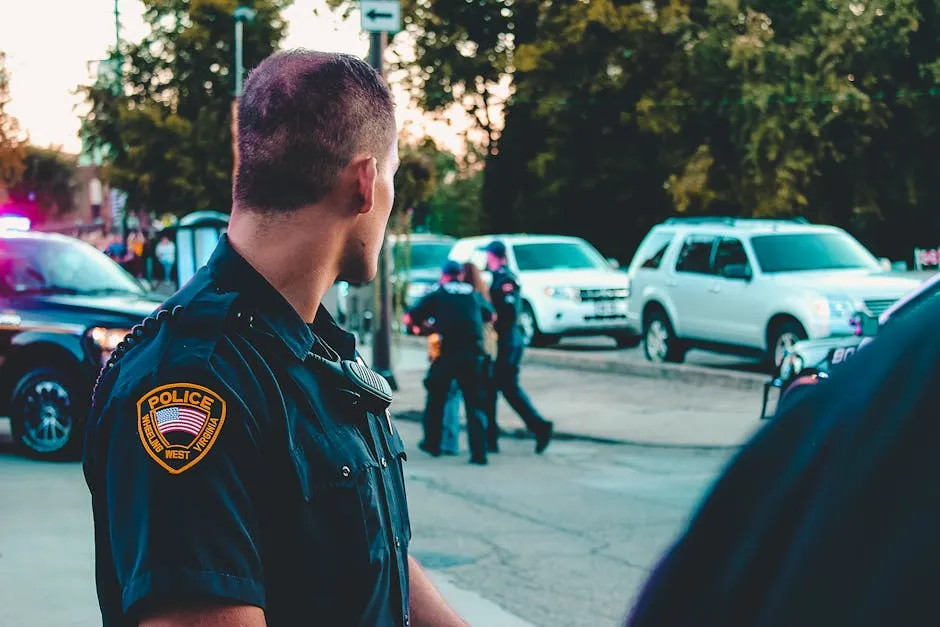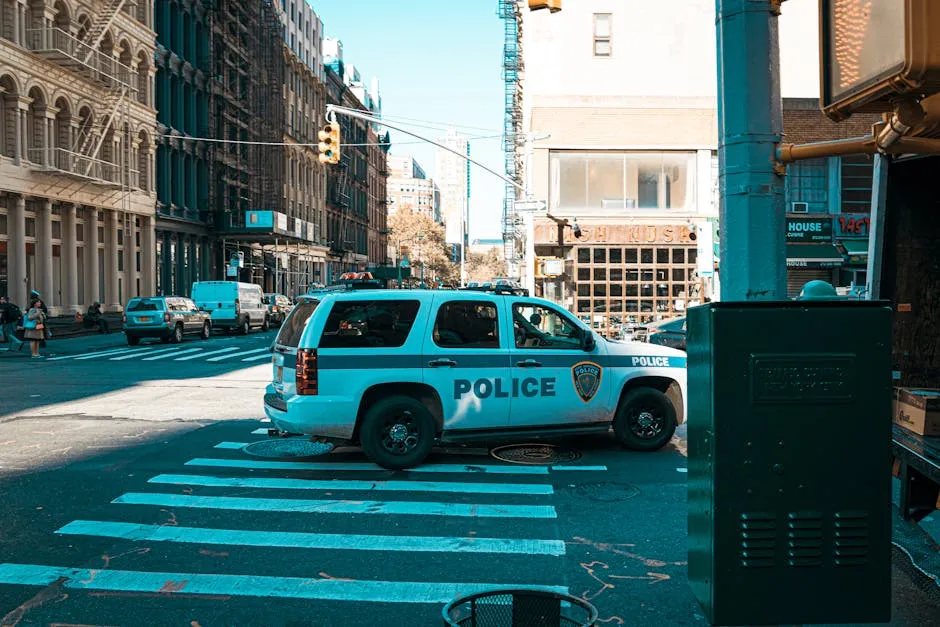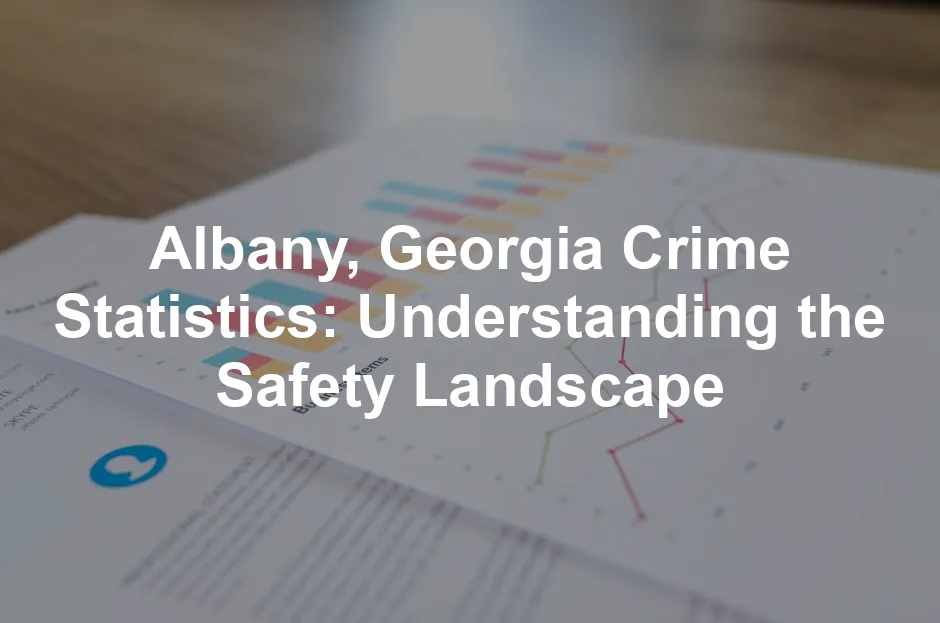Introduction
Albany, Georgia, is a city steeped in history and Southern charm. Nestled along the banks of the Flint River, it offers a unique blend of culture and community spirit. However, like any city, it’s essential to assess its safety through crime statistics. Understanding these figures can help residents, visitors, and policy-makers make informed decisions. This article aims to provide a comprehensive overview of Albany’s crime statistics, shedding light on trends and comparisons with state and national averages. By examining data from reliable sources, we can gain insight into the safety landscape of Albany, Georgia, and help potential residents gauge the city’s livability. Crime statistics play a vital role in evaluating community safety. For prospective residents, knowing the crime rates can influence their decision to move. Visitors might also want to understand the safety level before exploring the city. Moreover, policy-makers can utilize this data to design effective crime prevention strategies. With that in mind, let’s dive into the details of Albany’s crime statistics and what they mean for its community.
Albany Crime Overview
Albany’s overall crime rate stands at 12 per 1,000 residents, which aligns closely with national averages. This means if you’re strolling through Albany, your chances of encountering a crime are relatively moderate. However, the reality is that the likelihood of becoming a victim of crime in Albany is approximately 1 in 85. That’s right; for every 85 residents, one may experience a crime incident. When we compare Albany’s crime statistics to other cities in Georgia, the picture becomes clearer. Albany’s crime rate is lower than about 49% of communities in the state. It is notably safer than many similarly sized cities across the U.S. However, don’t let that fool you into thinking crime is non-existent. Albany has its share of challenges. Albany’s safety ranking reflects various factors, including socioeconomic conditions. High poverty rates can influence crime levels, contributing to perceptions of safety. With around 29.7% of residents living below the poverty line, concerns about safety often arise. For a deeper understanding of crime statistics in Albany, consider exploring a comprehensive analysis of the city’s data.
To bolster your personal safety, consider carrying a Pepper Spray for Self-Defense. It’s a handy tool that can give you peace of mind when walking alone or in unfamiliar areas. Despite these challenges, Albany’s community works diligently to improve safety. Local law enforcement agencies are actively engaged in crime prevention initiatives. Understanding these crime statistics helps paint a clearer picture of safety in Albany, enabling residents to make informed choices about their community.Examining Albany’s crime statistics can provide valuable insights into safety concerns. albany ny crime statistics

Crime Statistics Breakdown
Violent Crime
Overview of Violent Crimes
Violent crime includes serious offenses like murder, rape, robbery, and assault. These crimes threaten personal safety and can leave lasting impacts on victims and communities. In Albany, Georgia, the violent crime rate is currently 4 per 1,000 residents. To put that into perspective, Georgia’s overall rate is slightly higher at about 3.67 per 1,000 residents, while the national average stands at approximately 4 per 1,000 residents. This means Albany’s violent crime rate is on par with the national average, indicating that while the city is not free from violent incidents, it is relatively safe compared to many urban areas. Understanding the nuances of Albany’s violent crime statistics is essential. The chance of becoming a victim of violent crime in Albany is about 1 in 285. This statistic offers a glimpse into the safety dynamics of the city and demonstrates that while there are concerns, not everyone is at risk.
Detailed Breakdown
Murder: In Albany, there were 16 reported murders, translating to a murder rate of 0.24 per 1,000 residents. This figure is significant, as it highlights a concerning aspect of crime in the city, particularly in comparison to the national average of 6.3 per 100,000 residents. While Albany may not have the highest murder rates, any loss of life is tragic and highlights the need for community safety initiatives. Rape: The reported number of rapes in Albany is also 16, which corresponds to a rate of 0.24 per 1,000 residents. This rate is lower than the national average of 40 per 100,000 residents, yet it remains a critical concern. Community awareness and support for victims are vital in addressing this issue. For those who want to feel more secure at home, a Home Security Camera System can be a game-changer. With real-time monitoring, you can keep an eye on your property and deter potential intruders. Robbery: Albany recorded 10 robbery incidents, giving a rate of 0.15 per 1,000 residents. While this number appears low, it still represents a significant aspect of violent crime that can impact community perception and safety. Robbery can often lead to feelings of vulnerability among residents. Assault: The most prevalent violent crime in Albany is assault, with 194 reported incidents, equating to a rate of 2.89 per 1,000 residents. This figure indicates that the majority of violent crime incidents fall into this category. Understanding the factors contributing to assaults can help local law enforcement and community groups design effective prevention strategies.
Property Crime
Overview of Property Crimes
Property crimes include offenses such as burglary, theft, and motor vehicle theft. These crimes, while not violent in nature, can still cause significant distress and financial loss to victims. In Albany, the property crime rate stands at 8 per 1,000 residents. This rate is considerably lower than Georgia’s state average of 16.91 per 1,000 residents and the national average of 20 per 1,000 residents. This difference suggests that Albany is relatively safer in terms of property crime compared to many other locations. The likelihood of becoming a victim of property crime in Albany is approximately 1 in 122, which is important for residents and potential newcomers to understand. While property crimes can happen anywhere, being aware of the statistics can help in taking precautions.
Detailed Breakdown
Burglary: Albany experienced 49 burglaries, translating to a burglary rate of 0.73 per 1,000 residents. This figure is significantly lower than the national average of 269.8 per 100,000 residents, indicating that the risk of burglary is relatively low in Albany. Theft: The city witnessed 431 theft incidents, which equates to a theft rate of 6.41 per 1,000 residents. This category represents the bulk of property crimes in Albany. While the numbers show a prevalence of theft, they also suggest that community vigilance and local initiatives could effectively address this issue.

Yearly Crime Trends
Over the past five years, Albany, Georgia, has seen notable fluctuations in its crime rates. Understanding these trends is crucial for residents and potential movers alike. Let’s break down the changes in both violent and property crimes to paint a clearer picture of safety in Albany. The following table illustrates the yearly crime statistics for Albany from 2018 to 2022:| Year | Violent Crime Rate (per 1,000 residents) | Property Crime Rate (per 1,000 residents) |
|---|---|---|
| 2018 | 5.0 | 9.0 |
| 2019 | 4.5 | 8.5 |
| 2020 | 4.0 | 7.0 |
| 2021 | 3.8 | 6.0 |
| 2022 | 4.0 | 8.0 |


Crime Comparisons
State and National Comparison
Violent Crime Comparison
When comparing Albany’s violent crime rates to state and national averages, the data reveals some significant insights. Albany’s violent crime rate is currently at 4 per 1,000 residents, which aligns closely with the Georgia state average of 3.67 per 1,000 residents. However, the national average stands slightly higher at around 4 per 1,000 residents. This means Albany is relatively on par with the state while being slightly below the national average. Still, the chance of becoming a victim of violent crime in Albany is about 1 in 285, which is a stark reminder that caution is always advisable.
Property Crime Comparison
When it comes to property crime, Albany’s statistics tell a different story. The property crime rate in Albany is 8 per 1,000 residents, significantly lower than Georgia’s state average of 16.91 per 1,000 residents and the national average of 20 per 1,000 residents. This disparity suggests that Albany is relatively safer for property crimes compared to many other cities. The implications of these comparisons are twofold. On one hand, the lower property crime rate can enhance Albany’s appeal to potential residents and businesses. On the other hand, it also underscores the need for continued vigilance and community involvement to maintain and further improve safety. Overall, understanding these comparisons can guide discussions on crime prevention strategies and community safety initiatives. Albany’s unique position in relation to state and national averages highlights both the progress made and the work still needed to foster a safer environment for all its residents.
Local Perception and Safety Measures
Resident Sentiment
Surveys reveal a mixed bag of feelings about safety in Albany. A staggering 89% of residents express concerns about crime rates. Many feel uneasy, especially at night. Some describe the atmosphere as “somewhat safe,” which sounds like a compliment dressed in caution. Only about 11% feel secure, believing crime is low. When it comes to law enforcement, the feedback is just as varied. Many residents acknowledge the police presence, noting that officers are visible. However, 43% feel that police response times could improve. This sentiment suggests that while residents appreciate visibility, they crave quicker reactions to incidents. Local law enforcement is actively working to improve these perceptions. They are implementing community engagement efforts, which aim to build trust and collaboration. After all, a partnership between the police and the community helps everyone feel safer.
Safety Initiatives
Albany has rolled out several community programs to tackle crime and enhance safety. One standout initiative is the Neighborhood Watch program, which encourages residents to keep an eye on each other. This creates a united front against crime, turning neighbors into allies. Additionally, the Albany Police Department hosts regular community meetings. These gatherings allow residents to voice concerns and discuss local crime trends. They also serve as platforms for sharing safety tips and resources. To prepare for emergencies, consider assembling an Emergency Preparedness Kit for your home. Another notable program is the “Safe Streets” initiative. This project focuses on improving lighting in high-crime areas and enhancing surveillance systems. By making neighborhoods brighter and more visible, they aim to deter would-be criminals. Moreover, partnerships with local organizations help provide resources for at-risk youth. By offering mentoring and recreational programs, they aim to steer young people away from crime. In summary, Albany’s proactive approach to safety combines community involvement and local law enforcement efforts. These initiatives not only address crime but also foster a sense of community and support.
Popular Neighborhoods and Their Safety
Overview of Notable Neighborhoods
Albany, Georgia, boasts several neighborhoods that draw in residents and visitors alike. Ducker/Gillionville is a popular choice, thanks to its family-friendly vibe and spacious homes. Doublegate is another gem, known for its golf course and beautifully landscaped areas. Westwood stands out with its charming tree-lined streets and close-knit community feel. Merry Acres offers a mix of comfortable homes and local shops, making it a convenient choice for many. Arcadia Heights is an up-and-coming neighborhood, attracting younger families with its affordable housing options. Putney, Sherwood, Eudgemar, Palmyra Heights, and Acree round out the list of desirable areas. Each neighborhood has its unique character, catering to various lifestyles and preferences.
Crime Rate Analysis by Neighborhood
When comparing crime rates across these neighborhoods, the differences are notable. Ducker/Gillionville enjoys a relatively low crime rate, making it a safe haven for families. Doublegate also maintains a solid reputation for safety, thanks to its active community watch. In contrast, Westwood experiences slightly higher property crime rates, but ongoing community initiatives are working to address this. Merry Acres has seen fluctuations in crime, particularly in theft, but residents remain vigilant. Arcadia Heights, while affordable, has a higher crime rate compared to more established neighborhoods. Local authorities are aware and have stepped up efforts to enhance safety. Putney and Sherwood are generally considered safe, with crime rates similar to Ducker/Gillionville. Eudgemar and Palmyra Heights also maintain lower crime statistics. Acree, while developing, shows promise with community programs aimed at reducing crime. To ensure safety while exploring the outdoors, consider getting a Reflective Safety Vest. It’s a great way to stay visible during evening activities. In conclusion, while some neighborhoods in Albany stand out for their safety, others face challenges. Continuous community involvement and law enforcement efforts are essential to maintaining and improving safety across the city.Conclusion
In summary, Albany, Georgia, presents a complex picture of crime statistics. While the overall crime rate is 12 per 1,000 residents, it reflects a range of violent and property crimes that can impact community perceptions. The violent crime rate is 4 per 1,000, with notable incidents of assault and robbery, while property crime stands at 8 per 1,000 residents. Understanding these figures is crucial. They not only inform residents and visitors about potential risks but also help policymakers devise effective safety strategies. Crime statistics shape the narrative of safety in Albany, influencing whether families choose to settle here or tourists explore its charm. However, it’s essential to balance these statistics with personal experiences. Many residents feel safe in their neighborhoods, despite the numbers. Community initiatives and local law enforcement efforts aim to enhance safety and foster a sense of security among residents. If you’re looking to improve your home’s air quality, consider investing in an Air Purifier for Home Safety. Cleaner air can lead to a healthier living environment, which is essential for overall well-being. Ultimately, Albany’s crime data isn’t just a collection of numbers; it’s part of a larger story about community well-being. Acknowledging both data and personal experiences will lead to a more nuanced understanding of safety in Albany.FAQs
What are the most common crimes in Albany, Georgia?
The most prevalent crimes in Albany include assaults, thefts, and burglaries. Violent crimes like robbery and rape also occur, though at lower rates compared to property crimes.
How does Albany’s crime rate compare to other cities in Georgia?
Albany’s crime rate is lower than about 49% of communities in Georgia. While it has a higher violent crime rate than some smaller cities, it remains safer than many similarly sized urban areas.
What steps are being taken to improve safety in Albany?
Albany has implemented community programs like Neighborhood Watch initiatives and regular police-community meetings. These efforts aim to enhance communication and collaboration between residents and law enforcement.
Is Albany a safe place to live?
Albany presents a mixed picture of safety. While crime statistics show higher rates of certain offenses, many residents report feeling secure in their neighborhoods. Balancing data with personal experiences is key to understanding safety in the city.
All images from Pexels




